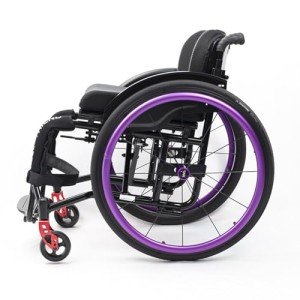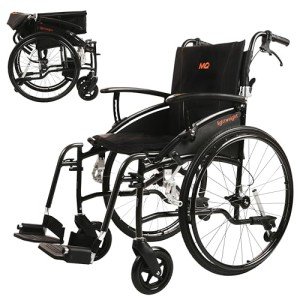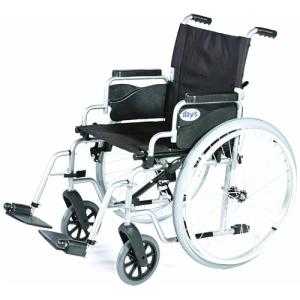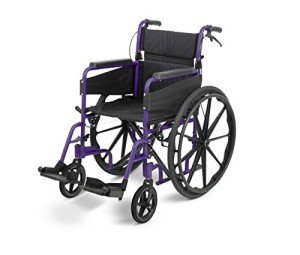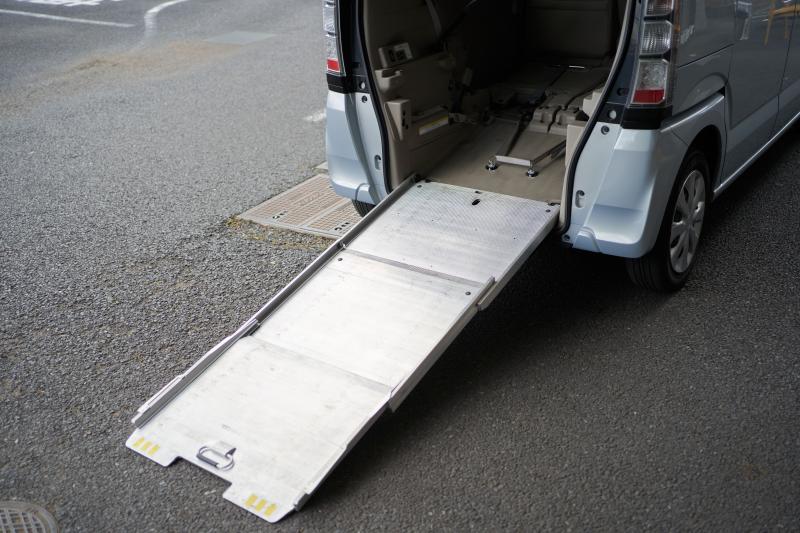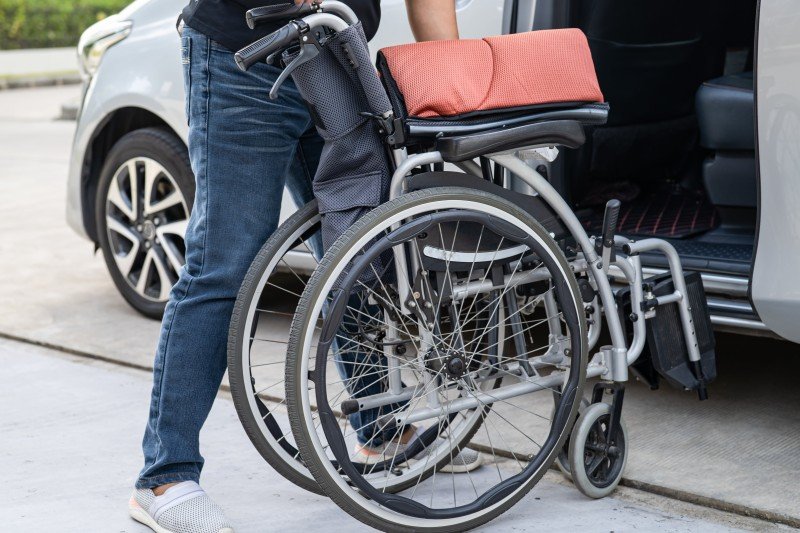Self propelled wheelchairs are essential mobility aids for individuals who require assistance with moving around due to various physical limitations. These wheelchairs empower users to propel themselves forward using their upper body strength, providing a sense of independence and freedom. In this comprehensive guide, we will explore the features, benefits, selection criteria, usage tips, maintenance requirements, customization options, and more related to self propelled wheelchairs.
Self Propelled Wheelchairs
Self propelled wheelchairs are mobility devices designed to be moved manually by the user, using their arms to turn the wheels and navigate their surroundings. These wheelchairs are equipped with large rear wheels, push rims for the user to grip and propel the chair forward, and often come with additional features for user comfort and convenience.
What are Self Propelled Wheelchairs?
Self propelled wheelchairs are mobility aids that allow individuals to move independently by propelling the wheelchair with their arms. They consist of a sturdy frame, a seat, footrests, and large rear wheels. The user can grip the push rims attached to the rear wheels and push themselves forward by moving their arms in a circular motion. Self propelled wheelchairs are available in various designs, materials, and configurations to suit different user needs and preferences. They provide a practical and efficient means of mobility for individuals with disabilities, injuries, or conditions that affect their ability to walk or stand for extended periods.
Key Features of Self Propelled Wheelchairs
Self propelled wheelchairs come with a range of features that enhance comfort, convenience, and usability for the user. Some key features to look for when selecting a self propelled wheelchair include:
- Large Rear Wheels: These wheels enable the user to propel the wheelchair forward with less effort.
- Push Rims: The push rims are mounted on the rear wheels and provide a gripping surface for the user to push the wheelchair.
- Foldable Frame: Many self propelled wheelchairs have a foldable frame for easy storage and transportation.
- Adjustable Seat: The seat height and angle should be adjustable to ensure proper posture and comfort for the user.
- Footrests: Removable or swing-away footrests make it easier for the user to get in and out of the wheelchair.
- Brakes: Some self propelled wheelchairs come with hand brakes for added safety and control when navigating slopes or uneven terrain.
Benefits of Self Propelled Wheelchairs
Self propelled wheelchairs offer numerous benefits to users, including:
- Independence: Users can move around independently without relying on assistance from others.
- Physical Exercise: Propelling a self propelled wheelchair provides a form of upper body exercise for the user.
- Maneuverability: These wheelchairs are easy to navigate in tight spaces and turn in different directions.
- Customization: Users can customize their self propelled wheelchairs with accessories and modifications to suit their specific needs.
- Cost-Effective: Compared to electric wheelchairs, self propelled wheelchairs are generally more affordable and easier to maintain.
How to Choose the Right Self Propelled Wheelchair
Selecting the right self propelled wheelchair is crucial to ensure comfort, usability, and functionality for the user. Here are some factors to consider when choosing a self propelled wheelchair:
- User Requirements: Consider the user's weight, height, mobility limitations, and lifestyle needs.
- Frame Material: Choose between aluminum, steel, or titanium frames based on durability, weight, and cost considerations.
- Seat Size and Type: Ensure that the wheelchair seat is wide and deep enough for the user to sit comfortably.
- Wheel Size: Larger rear wheels offer better performance outdoors and on rough terrain, while smaller wheels are more suitable for indoor use.
- Adjustability: Look for a wheelchair with adjustable seat height, angle, and footrest positions for optimal comfort and support.
- Portability: If the wheelchair needs to be transported frequently, choose a model that is lightweight and foldable for easy storage and handling.
Tips for Using Self Propelled Wheelchairs
To maximize the benefits of a self propelled wheelchair and ensure safe usage, consider the following tips:
- Maintain Proper Posture: Sit upright with your back against the wheelchair backrest to prevent slouching and reduce strain on your back.
- Use Correct Propelling Technique: Push the wheels in a smooth, circular motion using your arms and avoid sudden or jerky movements.
- Practice Uphill and Downhill Maneuvering: Learn how to navigate slopes safely by using the wheelchair brakes and controlling your speed.
- Regular Maintenance: Keep the wheelchair clean, check for loose screws or parts, lubricate moving components, and inspect the tires for wear and tear.
- Avoid Overloading: Do not exceed the weight capacity of the wheelchair or carry heavy items that could affect stability and maneuverability.
- Seek Training: If you are new to using a self propelled wheelchair, consider seeking guidance from a healthcare professional or mobility specialist to learn proper techniques and safety precautions.
Self Propelled Wheelchairs vs Electric Wheelchairs
While self propelled wheelchairs rely on manual propulsion by the user, electric wheelchairs are powered by rechargeable batteries and controlled using a joystick or other electronic devices. Here are some key differences between self propelled wheelchairs and electric wheelchairs:
Self Propelled Wheelchairs
- Manual Propulsion: Users push the wheels with their arms to move the wheelchair.
- Physical Exercise: Propelling the wheelchair provides upper body workout for the user.
- Greater Maneuverability: Easier to navigate in narrow spaces and turn in different directions.
- Lower Cost: Generally more affordable and cost-effective than electric wheelchairs.
- Suitable for Active Users: Ideal for individuals who prefer a more active and independent mobility solution.
Electric Wheelchairs
- Motorized Operation: Powered by batteries and controlled using a joystick or electronic device.
- Ease of Use: Requires less effort and physical exertion compared to self propelled wheelchairs.
- Longer Range: Can travel greater distances without user fatigue.
- Higher Cost: Electric wheelchairs are typically more expensive than self propelled wheelchairs.
- Suitable for Limited Mobility: Ideal for users with limited upper body strength or mobility impairments.
Self Propelled Wheelchairs for Different Needs
Self propelled wheelchairs are available in a range of configurations to meet the diverse needs of users with varying mobility requirements. Some specialized self propelled wheelchairs include:
- Bariatric Wheelchairs: Designed for individuals who require a higher weight capacity and wider seating area for enhanced comfort and stability.
- Sports Wheelchairs: Lightweight and agile wheelchairs built for athletic activities such as basketball, tennis, or racing.
- Pediatric Wheelchairs: Smaller-sized wheelchairs designed for children with mobility limitations, featuring adjustable components to accommodate growth.
- Reclining Wheelchairs: Provide adjustable recline positions for users who need to shift their weight or rest in a reclined posture.
- Tilt-in-Space Wheelchairs: Offer tilting mechanisms to redistribute body weight and relieve pressure, ideal for individuals with postural or pressure management needs.
Maintaining and Repairing Self Propelled Wheelchairs
Proper maintenance and timely repairs are essential to ensure the longevity and performance of a self propelled wheelchair. Here are some tips for maintaining and repairing your wheelchair:
- Regular Cleaning: Wipe down the frame, wheels, and seating surfaces with a damp cloth to remove dirt, dust, and debris.
- Inspection: Check for loose screws, worn-out parts, damaged upholstery, or signs of corrosion regularly.
- Tire Care: Keep the wheelchair tires properly inflated, replace worn-out tires, and inspect for any punctures or damage.
- Lubrication: Apply lubricant to moving parts such as wheel axles and brakes to maintain smooth operation.
- Battery Maintenance (if applicable): If your wheelchair has a battery-powered function, follow the manufacturer's instructions for charging and storage.
- Professional Servicing: Schedule periodic maintenance checks with a qualified technician to address complex repairs, adjustments, or part replacements.
Customizing Self Propelled Wheelchairs
Users can customize their self propelled wheelchairs to enhance comfort, functionality, and personal style. Some common customization options include:
- Seat Cushions: Choose from various materials and designs to optimize comfort and reduce pressure sores.
- Backrest Options: Select different backrest heights, angles, and materials for improved support and posture.
- Wheel Upgrades: Upgrade to high-performance wheels or add wheel locks for better traction and stability.
- Armrests and Footrests: Adjustable armrests and footrests can be customized to match the user's preferences and needs.
- Side Guards and Accessories: Attach side guards, storage pouches, cup holders, or other accessories for added convenience.
- Color and Design: Choose wheelchair frames, upholstery, and components in various colors and styles to express personal taste and preferences.
Frequently Asked Questions about Self Propelled Wheelchairs
Are self propelled wheelchairs suitable for outdoor use?
- Yes, self propelled wheelchairs are designed to navigate outdoor terrain, including sidewalks, parks, and trails, with larger rear wheels for better performance.
Can self propelled wheelchairs be used by individuals with limited upper body strength?
- Self propelled wheelchairs require a certain level of upper body strength to propel the wheelchair effectively. Users with limited strength may benefit from electric wheelchairs.
How do I choose the right seat size for a self propelled wheelchair?
- The seat size should be wide enough to accommodate the user's hips and deep enough to provide adequate seating support without being too constrictive.
Are there weight limitations for self propelled wheelchairs?
- Yes, each wheelchair model has a specified weight capacity that should not be exceeded to ensure safe operation and longevity of the wheelchair.
Can I transport a self propelled wheelchair in a car?
- Many self propelled wheelchairs are foldable and lightweight for easy transport in a car trunk or backseat. Consider the wheelchair's dimensions and weight for compatibility.
Do self propelled wheelchairs require assembly upon purchase?
- Some self propelled wheelchairs may require minor assembly, such as attaching the footrests or adjusting the seat height. Refer to the user manual for guidance.
Self propelled wheelchairs are valuable mobility aids that empower individuals to move around independently and enhance their quality of life. By understanding the features, benefits, selection criteria, maintenance needs, and customization options of self propelled wheelchairs, users can make informed decisions to meet their specific mobility requirements. Whether for daily activities, sports, or recreational pursuits, self propelled wheelchairs offer a versatile and practical solution for individuals with diverse mobility challenges.

